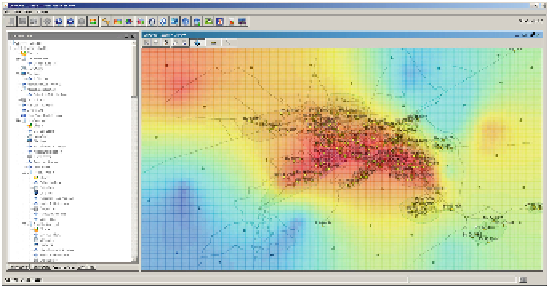Database Reference
In-Depth Information
Fig. 4.
CoReMo emulator.
- speed and position sensors mounted on each vehicle;
- temperature, humidity and atmospheric pressure sensors spread through the
city;
- terminals for transport company drivers (used for sending the routes and
notifications).
4.3 MAPE-K Loop Analyse Step
As presented in the previous sub section, the tra
c emulation environment has a
lot of interconnected arrays of tra
c sensors (such as loop detectors and radars)
and weather sensors. In order to be able to process the generated data and
transform it into useful information, dedicated tools have to be used, witch
have the ability to process in near real-time vast amounts of data with reduced
latencies and also to include temporal, causal and structural relations between
incoming process events. Such abilities are provided by CEP and in this case the
Esper [
15
] CEP engine is used.
CEP was originally designed for system architecture prototyping with power-
ful event oriented semantics. Although near real-time event processing platforms
and solutions exists for decades [
16
], CEP has consolidated itself as a separate
topic rather recently. The temporal, causal and structural relations between the
raw events are exploited with the goal of producing added value information
represented as complex events. The usual event-oriented operations [
17
] imple-
mented by a CEP engine are: filtering, translation, aggregation, composition,
pattern detection. The Event Processing Language (EPL) is a crux characteris-
tic for the CEP platform, and represents all the operators which can be used by
the developer to express the logic which is executed by PNs (such as the opera-
tions presented above). Because the EPL of the CEP engines provides operators
such as windows, aggregation, joining and analysis functions the developer can
define Event Processing Networks (EPNs) that perform event stream analysis.
In the follow paragraphs of this section we will present an EPN used for
detecting trac jams the GPS data generated by the vehicles (see Fig.
5
). The

Search WWH ::

Custom Search